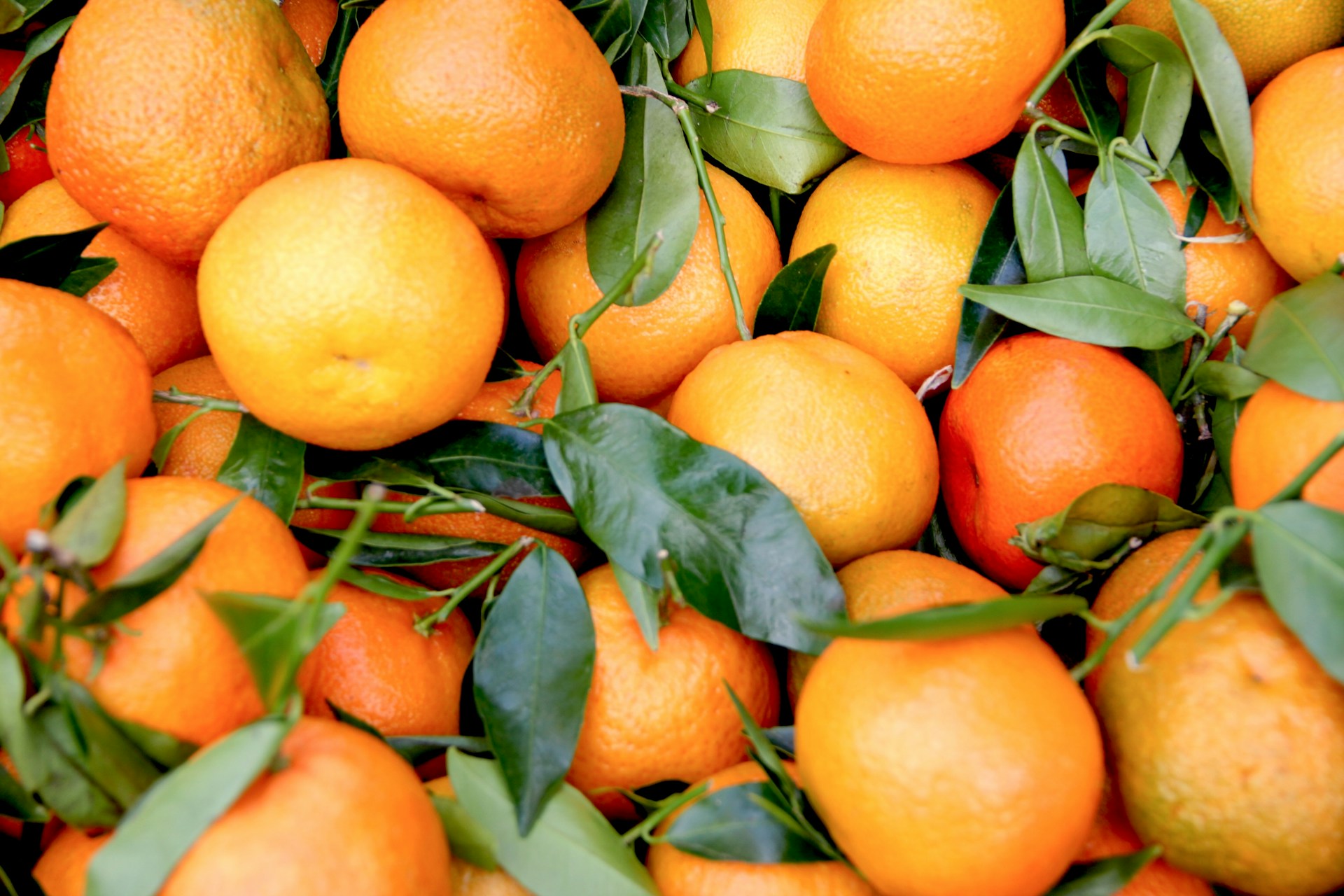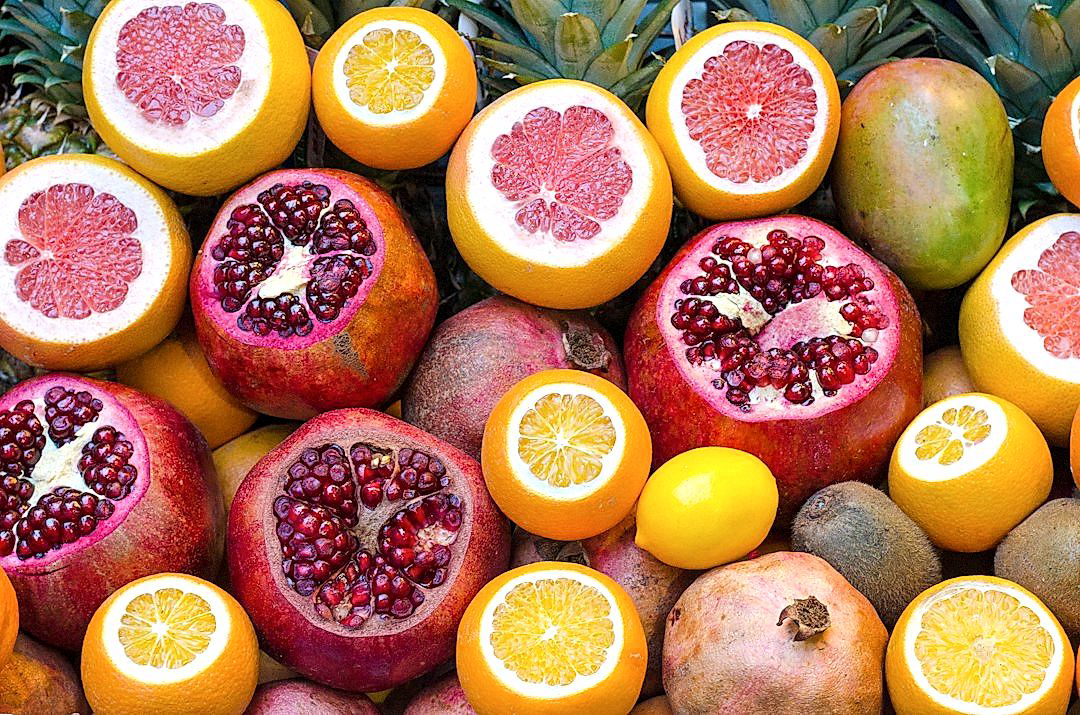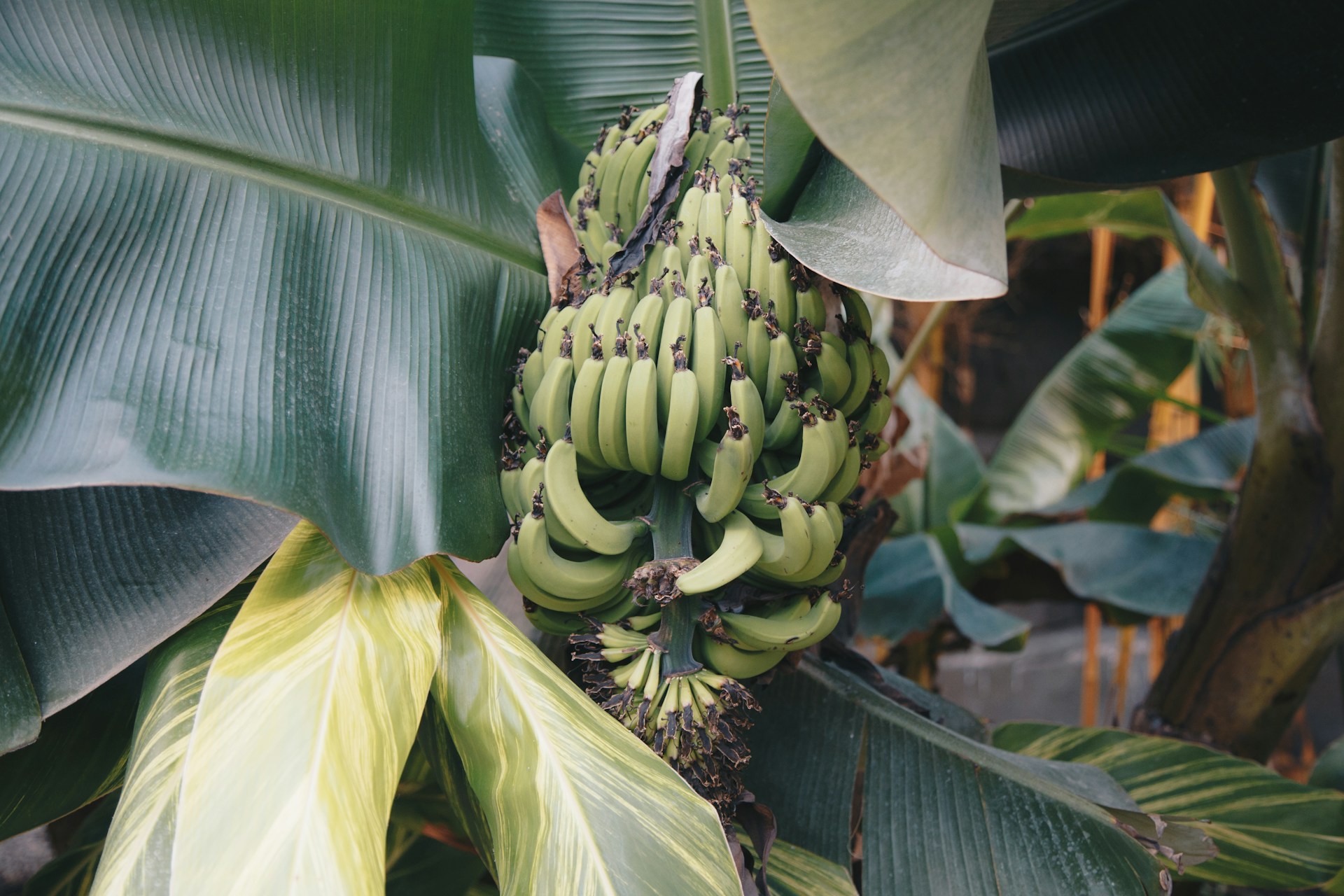Ensuring fresh and undamaged produce from farm to table is largely dependent on the robustness of the transport safety measures in place.
The logistics industry is confronted with various challenges, including maintaining food quality, preventing contamination, and ensuring timely delivery.
This article presents an insightful discussion on the need for optimal safety norms in the distribution of fresh produce.
The efficiency of an industry does not solely rely on quick delivery but should also pay critical attention to the safety of goods in transit.
Effective guidelines not only foster consumer trust but also curtail financial losses linked with wastage.
Detailed below, our readers will gain an understanding of the intricate complexities of this matter and how to navigate them effectively.
Contents
- Transport Safety Measures For Produce Distribution
- 1. Regular vehicle maintenance and safety checks
- 2. Adequate Driver Training and Certification
- 3. Proper Load Management to Avoid Overloading
- 4. Use of Refrigeration for Perishable Goods
- 5. Compliance with Traffic and Safety Regulations
- 6. Use of GPS Tracking for Shipment Monitoring
- 7. Regular rest breaks for drivers on long routes
- 8. Ensuring good packaging to protect produce.
- 9. Regular Pest Control Measures
- 10. Using specialized vehicles for transporting produce
- The Bottom Line
Transport Safety Measures For Produce Distribution
1. Regular vehicle maintenance and safety checks
The aspect of regular vehicle maintenance and safety checks is a critical step in ensuring transport safety measures for produce distribution.
Produce distribution involves transporting goods over long distances, which can sometimes lead to unavoidable wear and tear of the vehicle parts. Regular maintenance helps to keep vehicles in optimal conditions, reducing the risk of sudden breakdowns during transportation.
Failure to conduct proper vehicle maintenance could lead to severe consequences like accidents, delayed deliveries and in worst cases, damage to the goods being transported. Thus, the need for constant examination and regular updating of vehicle parts cannot be overemphasized.
Periodic maintenance checks ensure that vehicle engines are running smoothly, brakes are in good condition, and tyres are not worn out. These checks guarantee a safe journey, especially when transporting delicate commodities like produce.
This practice not only prolongs the vehicle’s lifespan but also significantly decreases the chances of road accidents.
Regular maintenance involves various activities such as oil changes, tyre checks, brake servicing, and occasionally, full vehicle servicing to ensure all components are in top condition.
These activities must be carried out by certified professionals for the sake of accuracy and perfection.
Safety checks are complementary to maintenance procedures. They’re conducted to ensure the safety of the drivers, goods, and other road users.
They involve examining vehicles for possible defects or issues that could pose potential threats or hazards during the transportation process.
All these checks should be documented and followed up to ensure consistent vehicle performance and safety.
Furthermore, these checks should be carried out not just before a journey, but also during and after the journey, to understand how the vehicle is performing over time.
Regular safety checks can also include analysis of the vehicles’ load carrying capacity, ensuring it’s never exceeded as this can cause risk of tipping over or other hazards.
All these procedures are essential in guaranteeing a safe, prompt, and efficient produce delivery.
In fact, regular vehicle maintenance and safety checks should be a mandatory requirement for all firms involved in produce transport. They are one of the best ways to ensure the longevity of the delivery vehicles and the safety of the goods being transported.
Thus, investing in regular vehicle maintenance and safety checks is investing in the safety and efficiency of produce transportation.
2. Adequate Driver Training and Certification
Specialization in produce transportation requires appropriate driver training to guarantee produce safety and ensure adherence to safety regulations.
Through vigorous training, drivers can learn about the best practices in loading, unloading, and transporting produce safely.
Minimizing potential damage to the produce during transportation is among vital things drivers need to be trained on.
The sensitivity of perishable goods requires drivers to have knowledge on appropriate handling techniques.
Moreover, proper driver training includes understanding the implications of overloading vehicles and effective weight distribution strategies for safe transportation.
It’s essential for drivers to have comprehensive knowledge about the rules and regulations related to produce safety regulations and transportation laws in their respective regions.
Successful completion of the training should lead to the certification of drivers to ensure that they are qualified to transport produce.
Certification also serves as a testament to a driver’s ability to adhere to safety and traffic regulations.
Transportation companies must ensure that drivers undergo regular refresher training courses, to stay updated with ever-evolving safety standards and transportation technology.
Furthermore, adequate training can help in reducing road accidents that might result from lack of knowledge on road safety measures.
This not only helps in safe transportation of produce but also the safety of the driver and other road users.
Driver training programs should include education about driver fatigue, its potential impact on safe driving, and methods for managing fatigue.
Understanding weather patterns and their potential impact on road conditions is another important aspect of driver training.
Every driver should be taught techniques to handle difficult driving conditions such as fog, rain, or snow
Effective driver training and certification also ensures that drivers respect the rights of other road users, leading to safer roads.
Overall, driver training and certification is a key element to ensuring safe and efficient distribution of produce.
3. Proper Load Management to Avoid Overloading
The aspect of proper load management has several underlying implications, each of which worth considering in the context of ensuring the safe distribution of produce.
In reality, the process of loading produce onto a transport vehicle requires precision and care to avoid causing damage to the products.
Importantly, the overloading of transportation vehicles presents significant risks not only to the produce but also to the safety of others on the road.
Overloading is a common practice that may inadvertently result in the compromise of transport vehicle control, making it harder to steer and slow down when necessary.
Moreover, an overloaded vehicle is more likely to break down or, in the worst-case scenario, tip over, leading to considerable damage to the produce, and presenting a major road safety hazard.
With this in mind, establishing good load management practices is an essential measure in ensuring the safe and efficient distribution of produce.
One important aspect of load management is the sizing and capacity calculations of the transport vehicle.
Transport companies and drivers should be aware of the weight limit and capacity of their vehicles, and these limits should be strictly adhered to in order to prevent overloading.
Every vehicle has a gross vehicle weight rating (GVWR), which indicates the maximum operating weight of the vehicle, including its own weight plus the load it is carrying.
Calculate the total weight of the produce, as well as the packaging materials that are to be loaded onto the vehicle.
In addition, a load should be distributed evenly throughout the vehicle, to ensure stability during transport.
Incorrect weight distribution can result in an imbalance, causing the vehicle to tilt or sway during transit.
Lastly, when enforcing proper load management, remember to anticipate potential variables such as the possibility of adding additional goods during delivery stops.
Where feasible, use loading tools and equipment that can help in the safe and efficient loading and unloading of the produce.
By focusing on these key areas in load management, the distribution of produce will be more efficient, safe, and productive.
4. Use of Refrigeration for Perishable Goods
When transporting perishable goods, maintaining the right temperature is vital to ensure the longevity, quality, and safety of the produce.
The type and duration of perishable goods transported dictate the required temperature for refrigeration during the transport process.
Thorough planning should always precede the transportation of perishable goods to ensure the requisite temperature is maintained throughout the journey.
Meticulously monitoring the temperature during the journey is pivotal to maintain the freshness and integrity of the produce.
Temperature fluctuation beyond the acceptable range could lead to the multiplication of harmful bacteria, resulting in the spoilage of the perishable goods.
This bacteria growth can compromise the health of consumers using these produce, leading to diseases and even lethal infections in some cases.
Therefore, it is paramount for distribution companies to invest in high-quality refrigeration systems for their transport vehicles.
Advanced refrigeration systems offer precise temperature control, allowing for greater safety measures and the quality preservation of the transported goods.
They also come equipped with features like automatic temperature logging that record the temperature at regular intervals, ensuring compliance with safety standards and regulations.
This recorded data helps in providing a detailed temperature profile of the entire transportation process, which can be beneficial in case of quality disputes.
Prompt action can be taken in case of any unprecedented temperature changes during transit with the help of real-time temperature monitoring offered by advanced systems.
Goods carried using refrigeration are to be properly packed, keeping in mind the moisture created due to refrigeration which can damage the packaging and subsequently the produce.
Implementation of the correct defrosting techniques is also a critical aspect of using refrigeration effectively which improves the overall efficacy.
Proper cleaning and sanitation of the refrigerated compartments regularly is important to prevent any cross-contamination that can affect the produce’s quality.
Training of the driver and staff about the working and troubleshooting of refrigeration units is equally important to ensure smooth functioning.
All these points duly highlight the role of refrigeration in making transport safe for perishable goods while ensuring the best marketable quality.
5. Compliance with Traffic and Safety Regulations
When discussing transport safety measures for produce distribution, one cannot overlook the importance of complying with all prevailing traffic and safety regulations.
Transporters responsible for produce distribution are obligated to understand and abide by these set of regulations.
These laws are meant to safeguard the safety of everyone on the road, including the cargo being transported.
Virulently complying with traffic and safety regulations ensures producers, transporters and consumers are all protected in the distribution process.
Failing to adhere to such stipulations may result in severe penalties and damage to the company’s reputation, which can have a detrimental effect on business operations.
This compliance ranges from obeying simple traffic rules like speed limits and proper signaling to more detailed safety measures like ensuring the vehicle’s load is within the legal limit and the produce is properly secure.
Beyond common traffic laws, specific safety regulations are typically set out for commercial vehicles, especially those carrying perishable goods like produce.
For instance, some jurisdictions mandate regular vehicle checks and screenings to ensure that the vehicles used for distribution are fit for the road.
Some regulations even outline the precise temperature settings required for the transit of different types of perishables.
These regulations are vital in guaranteeing that the food being transported remains fresh and safe for consumption from the farm all the way to the store shelf or the consumer’s doorstep.
Produce distribution companies must take an active role in staying updated with these regulations as they can alter from time to time.
Regular internal audits and employee training sessions would help ensure that all employees are aware of and compliant with these changing regulations.
Firms should also foster a culture of responsibility and accountability to ensure that every single employee takes these regulations seriously.
In the long run, strict adherence to traffic and safety regulations not only guarantees the safety of the transport process but also enhances the overall efficiency of the supply chain.
Ultimately, if produce distribution companies put a strong emphasis on compliance with traffic and safety regulations, they will be taking a giant leap towards ensuring their operations are both safe and successful.
6. Use of GPS Tracking for Shipment Monitoring
Global Positioning System (GPS) tracking has evolved drastically as a significant technology in modern transportation and logistics industry.
The accurate tracking and monitoring of cargo have always been an essential concern in the distribution of perishable produce.
Continuous improvement in GPS technology has helped eliminate the fear of loss or theft of the produce during its transit.
Real-time tracking offered by GPS systems ensures the location of the produce can be tracked and monitored throughout the whole journey.
GPS tracking can also help track the truck’s route, speed, and halts, providing necessary insights to manage the transit efficiently.
This can be instrumental in ensuring that drivers adhere to their schedules and that perishable goods are delivered on time.
GPS tracking can serve as an indispensable tool for ensuring the safety and timeliness of produce distribution.
Moreover, GPS tracking also facilitates geofencing, a feature that allows setting a geographical boundary for the vehicle’s movement.
As soon as vehicles enter or exit this pre-defined boundary, the fleet manager would receive an alert notification.
This feature can ensure that the vehicle and the produce are always on the correct path, thus averting any unnecessary detours or delays.
Another advantage of using GPS tracking is that it allows for efficient fuel use.
Routes can be planned effectively, and unnecessary lengthy routes, which can lead to excessive fuel consumption, can be avoided.
This aspect ultimately leads to reduced operational costs, enhancing the overall efficiency of the produce distribution system.
Besides regular monitoring, emergency alert systems equipped with GPS technology can also alert the fleet management authorities about any breakdowns or accidents, thus enabling quick response.
It can also aid in recovering stolen vehicles by informing the necessary enforcement authorities about the vehicle’s precise location.
Given all these factors, the adoption and proper usage of GPS tracking technology is one of the most effective safety measures in the distribution of produce.
7. Regular rest breaks for drivers on long routes
Regular rest breaks for drivers on long routes is not only a crucial safety measure but also a legal requirement in many jurisdictions. Adequate rest is essential for maintaining focus and alertness on the road.
Professional and responsible companies understand the importance of ensuring that their drivers are well-rested and have a clear mind while transporting perishable goods. Rest breaks allow drivers to maintain their mental and physical faculties at optimum levels.
This policy can also prevent the occurrence of avoidable accidents that may lead to damage of the produce, which ultimately affects the bottom line of the business.
Long hours of driving without sufficient rest can lead to what is known as driver’s fatigue, which hampers the driver’s ability to concentrate on the road and react appropriately to changing traffic situations.
Different countries have different regulations pertaining to the duration of rest breaks, but most standard guidelines recommend a break every 2 hours of driving.
Fatigue-related accidents can be devastating, and they often lead to serious injuries or even fatalities. Not only does this cause a tragic loss of life but it can also harm the reputation of the company.
Each break should be long enough for the driver to get out of the vehicle, stretch their legs, and refresh their mind, ideally a minimum of 15 minutes.
Many companies provide driver accommodations or designate rest stops along the route to ensure drivers can get a substantial rest during multi-day routes.
The most professional companies also enforce strict penalties for violating rest break rules to discourage drivers from compromising their safety and the safety of others on the road.
Aside from the company’s responsibility to enforce and monitor rest breaks, it is important for drivers themselves to understand the importance of regular rest and to report any issues like fatigue that might affect their performance on the road.
Driver education and training programs often cover this crucial topic extensively, highlighting both the risks of driving while fatigued and the benefits of taking adequate rest.
Adopting such safety measures effectively ensures that drivers are in their best mental and physical state to perform their crucial role in the distribution chain of fresh produce.
By doing so, businesses not only safeguard their personnel and other road users but also ensure the safe and timely delivery of the produce.
Regular rest breaks for drivers on long routes: A simple, yet highly effective measure of ensuring transport safety in the produce distribution industry.
8. Ensuring good packaging to protect produce.
When transporting produce, it is of utmost importance to take into account the necessity of using good packaging.
Proper packaging is a safety measure often overlooked.
However, it plays a pivotal role in enhancing the quality and safety of the delivered produce, thus making it an integral part of a successful produce distribution process.
Produce such as fruits and vegetables are sensitive to environmental changes and can easily get damaged if not handled correctly.
Without proper packaging, produce is exposed to various elements that can degrade its quality, which in turn could lead to health risks.
Good packaging should not only be sturdy but also climate-appropriate to allow for tempreature control, especially if the produce is being transported over long distances or through climates that vary a lot.
It also needs to be carefully selected to prevent contamination from bacteria and chemicals.
Moreover, packaging also needs to be environmentally-friendly and should not contribute to the pollution and waste problem.
Emphasis should be put on using recyclable materials.
A very practical solution is to opt for packaging made with renewable, recyclable and compostable materials.
Another factor that should not be overlooked is the correct labelling of the produce in the packaging.
This indicates its origin, the type of produce, and important dates such as the harvest date.
Good packaging also implies the use of correct size and shape to avoid product wasting and ship more produce within the same space.
In fact, the packaging industry is constantly developing new solutions to ensure the produce remains intact and fresh during its journey from the farm to the consumer’s table.
It is crucial to remember that even the most minute damage can lead to complications later on for both end-consumer and distributor, emphasizing why this measure is critical for the safety and success of produce distribution.
In conclusion, while packaging might not be the most evident aspect of safety measures in produce distribution, it does play an essential part in ensuring that the fruits, vegetables or any other goods reach the end customers in the best and freshest possible condition.
9. Regular Pest Control Measures
Maintaining regular pest control measures is a critical part of transport safety measures when distributing produce.
Produce, being organic in nature, naturally attracts a significant assortment of pests, which can cause immense damage to the products if not taken care of.
Pesticides are commonly used as a part of these control measures, which prevents such infestations and hence, ensures the produce remains in perfect condition.
A well-planned and timely pest control strategy plays a critical role in safeguarding the freshness and quality of produce during transit, thus significantly contributing to the overall safety measures in the process.
However, it’s not just about using pesticides, but more importantly, about using them wisely and cautiously.
One crucial aspect involves the careful and minimal usage of chemicals, ensuring they don’t contaminate the produce or harm the end consumer.
This again brings into light, the importance of using non-toxic, eco-friendly pesticides that can effectively control the pests without posing a risk to the produce or the environment.
Pests commonly found include a variety of insects, rodents, birds, or even microbial contaminants, all of which require different methods of pest control.
Therefore, a thorough understanding and assessment of the type of pests likely to infest the produce is imperative for adopting an effective pest control measure.
An important note to remember is that pest control is not a one-time process but requires consistent vigilance and regular checks.
Elaborate records of the pest control methods used, and their effectiveness should be maintained to ensure refinement of techniques with every distribution cycle.
Similarly, the personnel involved must have sufficient training to handle the pests, use the tools, and manage the residues.
The modes of transport should be designed in a manner so as to discourage the entry and breeding of pests. They must be kept clean and be well-insulated, which restricts the entry of pests.
Lastly, any form of negligence in pest control can lead to serious quality degradation, health hazards and hence, should be considered as a top priority in the safety measures.
Following these thorough pest control measures guarantees that the suppliers deliver the customers with the highest quality produce, promoting the overall health and safety of the entire distribution chain.
10. Using specialized vehicles for transporting produce
In the domain of produce distribution, using specialized vehicles is a paramount transportation safety measure.
These vehicles are designed specifically to cater to the unique needs of transporting fruits, vegetables, and other perishable goods.
The design specifications of these vehicles include features such as temperature control, also known as refrigeration, to maintain the optimal temperature needed for the produce.
Specialized vehicles for transporting produce ensure the cargo’s longevity and freshness by controlling factors like temperature and humidity.
Such a regulated environment helps in preserving the quality and freshness of the goods, consequently maintaining their market value.
Another significant feature of these specialized vehicles is their ability to prevent pest intrusion.
Often equipped with advanced pest control measures, they substantially reduce the risk of infestation that may pose a threat to the quality of the produce.
Specialized vehicles also come with features such as partitions that allow segregation of different types of produce.
This segregative feature helps to prevent cross-contamination which could occur if incompatible produce types are transported together.
If due consideration is given to regular maintenance and upgrading of these vehicles, they can considerably minimize produce losses during transit.
To operate these vehicles efficiently and safely, it is imperative to have adequately trained drivers.
Specialized vehicles might require unique handling and operational knowledge, and so ensuring the drivers are trained and certified can be essential to transportation safety.
Furthermore, it is crucial that these vehicles are compliant with traffic and safety regulations.
Overloading of vehicles can lead to significant damage, and therefore proper load management must be maintained in specialized vehicles.
In conclusion, using specialized vehicles for transporting produce is a valuable measure in ensuring transport safety.
The Bottom Line
Efficient and safe transportation of produce requires a comprehensive approach that centers not just on preservation techniques, but on a number of other factors.
Keeping vehicles well-maintained and conducting regular safety checks significantly mitigate the risk of breakdowns and other problems that may lead to delays.
Investing in good driver training and certification programs ensures not only efficient driving, but also adherence to various safety procedures that reduce the risk of accidents.
Managing load optimally prevents overloading that can damage the vehicle or compromise safety.
Refrigeration safeguards the quality and freshness of perishable produce.
Strict compliance with traffic and safety regulations is necessary to ensure unhampered transport, while GPS tracking enables efficient monitoring and proactive handling of potential issues.
Furthermore, scheduling regular breaks for drivers improves focus and alertness, thereby promoting safety, while maintaining good packaging standards is crucial in protecting produce.
Regular pest control, moreover, helps to preserve the integrity and quality of the items.
Lastly, using specialized vehicles adds an important layer of protection, ensuring that produce reaches the market fresh, safe and ready for consumption.




